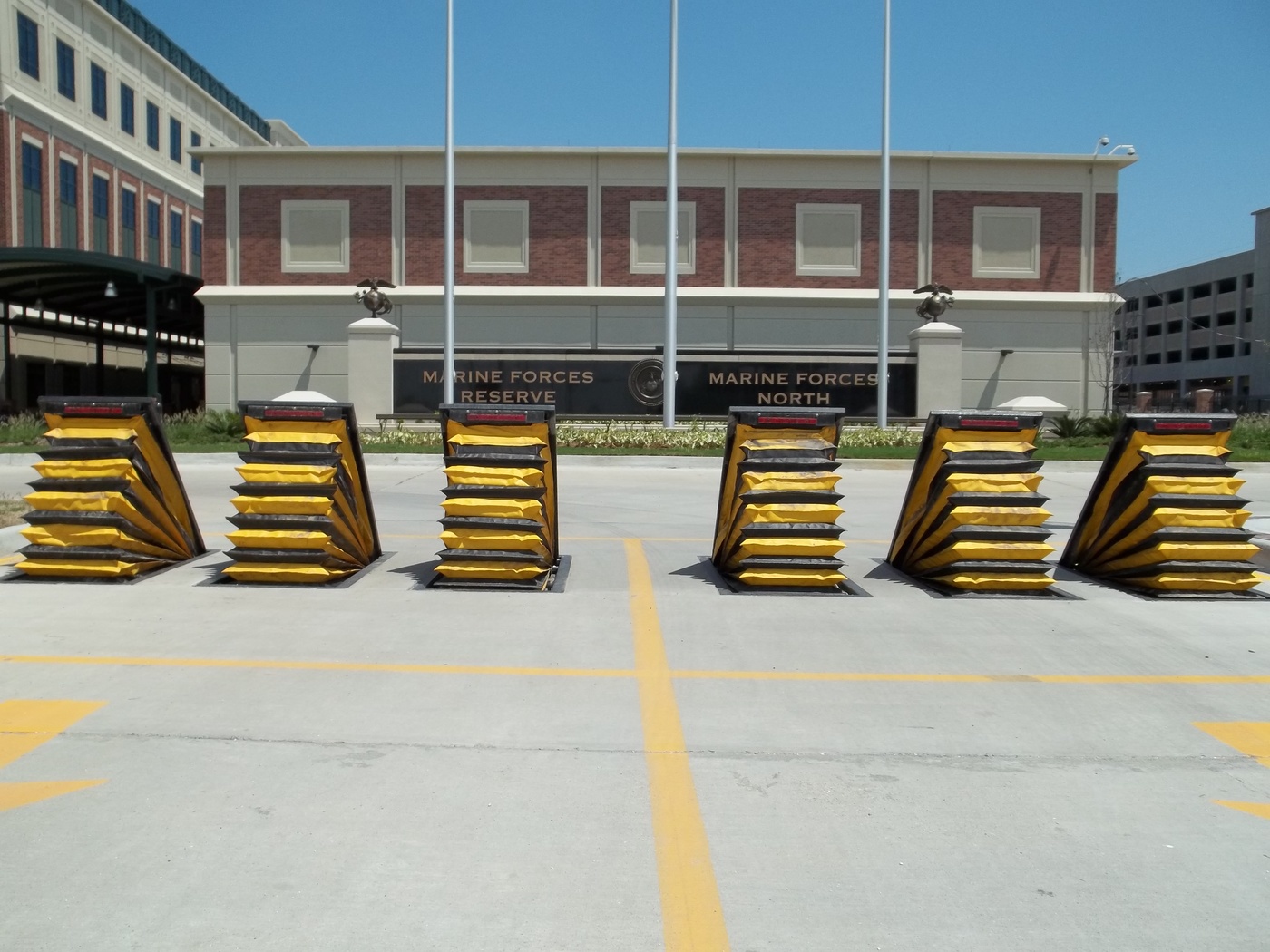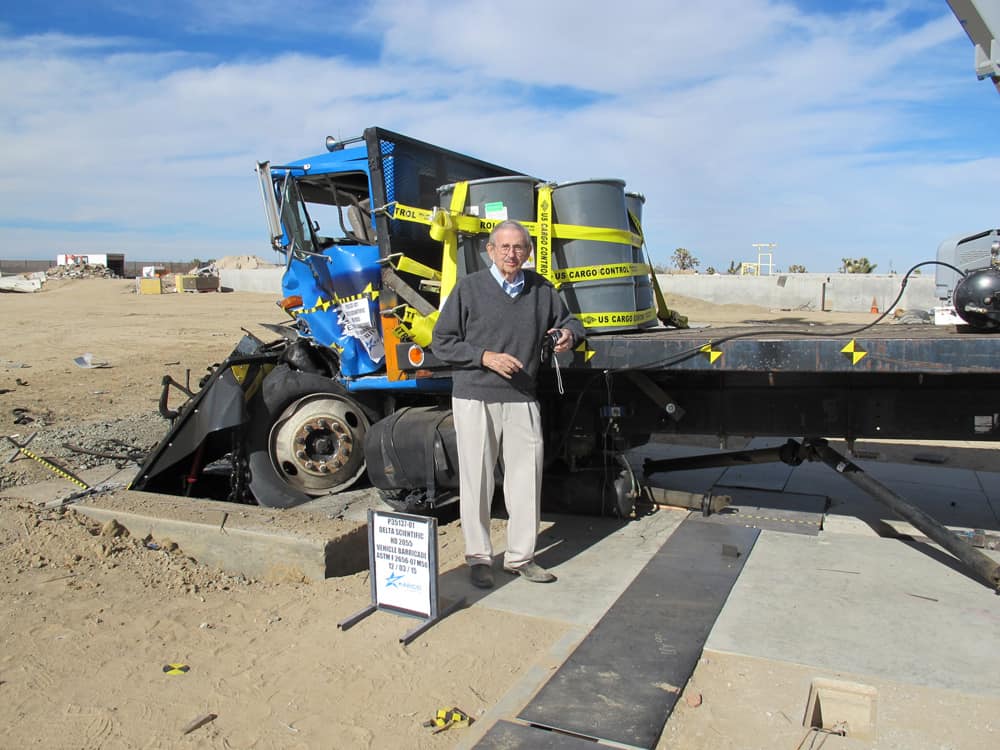Indicators on Wedge Barriers You Need To Know


18 might be done faster, conveniently, and expense efficiently. FIG. In particular personifications, the anchor 30 might be a steel framework consisting of plates, beam of lights(e. g., I-beams ), and/or other structures that are safeguarded within the foundation 14, which might be concrete. At the surface 12, an upper side 28 of the anchor 30 may be at the very least partly subjected
, consequently making it possible for the add-on of the barrier 10 to the support 30. g., threaded holes)in one or even more light beams or plates of the anchor 30 may be exposed to the surface area 12. In this fashion, bolts 32 or other mechanical bolts might be utilized to safeguard the obstacle 10 to the support 30. As the obstacle 10 is placed to the surface 12 of the structure 14, collection of particles and other product under the barrier might be lowered, and parts of the bather 10 might not be subjected to below quality settings. As shown by referral numeral 52, the training device 50 consists of elements disposed below the wedge plate 16. The components 52 under the wedge plate 16 may consist of an electromechanical actuator, a webcam, one or more camera surfaces, and so forth. Furthermore, the training device 50 includes a springtime assembly 54
The spring pole 58 is paired to a web cam(e. g., webcam 80 shown in FIG. 4) of the training mechanism 50. The springtimes 60 disposed regarding the springtime rod 58 are held in compression by spring supports 62, consisting of a taken care of springtime assistance 64. That is, the fixed spring assistance 64 is fixed about the foundation 14 et cetera of the bather 10.
A Biased View of Wedge Barriers
g., spring assistance 65 )may be dealt with to the end of the springtime rod 58 to enable compression of the springtimes 60. As the springs 60 are pressed in between have a peek here the spring sustains 62, the springtime setting up 54 creates a pressure acting on the camera combined to the springtime rod 58 in a direction 66. The staying pressure applied to
the cam camera deploy release wedge plate 16 may might provided given an electromechanical actuator 84 or other actuator. Thus, the spring setting up 54 and the actuator 84(e. g., electromechanical actuator)might operate together to equate the web cam and lift the wedge plate 16.
As discussed above, the spring assembly 54 puts in a consistent pressure on the cam, while the electromechanical actuator may be controlled to put in a variable pressure on the camera, therefore making it possible for the lifting and decreasing( i. e., deploying and pulling back )of the wedge plate 16. In particular embodiments, the constant force used by the springtime setting up 54 might be flexible. g., electromechanical actuator) is disabled. As will be appreciated, the spring assembly 54 may be covered and shielded from particles or various other elements by a cover plate(e. g., cover plate 68 revealed in FIG. 4) that might be substantially flush with the raised surface 38 of the structure 14. As stated above, in the deployed position, the wedge plate 16 offers to obstruct accessibility or traveling past the barrier 10. As an example, the barrier 10(e. g., the wedge plate 16 )may obstruct pedestrians or vehicles from accessing a property or path. As gone over above, the barrier 10 is affixed to the anchor 30 secured within the foundation 14,

front brackets 71. Consequently, the link settings up 72 might pivot and rotate to enable the collapse and expansion of the link settings up 72 throughout retraction more helpful hints and deployment of the bather 10. The link settings up 72 reason movement of the wedge plate 16 to be restricted. As an example, if a car is taking more tips here a trip towards the deployed wedge plate 16(e. As an example, in one condition, the safety legs 86 might be extended throughoutupkeep of the obstacle 10. When the safety and security legs 86 are released, the safety legs 86 sustain the weight of the wedge plate 16 versus the surface 12. Therefore, the lifting mechanism 50 may be deactivated, serviced, removed, changed, etc. FIG. 5 is partial viewpoint sight of a personification of the surface-mounted wedge-style barrier 10, showing the camera 80 and the camera surface areas 82 of the training device 50. Specifically, two webcam surfaces 82, which are referred to as lower camera surfaces 83, are positioned below the webcam 80. The reduced web cam surfaces 83 may be dealt with to the surface area 12 (e. For example, the lower camera surfaces 83 and the installing plate 85 might create a solitary item that is safeguarded to the support 30 by screws or other mechanical fasteners. Additionally, two web cam surface areas 82, which are referred to as top webcam surfaces 87, are placed above the web cam 80 and combined to (e. In other personifications, stepping in layers or plates may be placed between the surface area 12 and the lower web cam surface areas 83 and/or the wedge plate 16 and the upper web cam surfaces 87 As mentioned over, the webcam
80 translates along the web cam surface areas 82 when the wedge plate 16 is lifted from the retracted position to the released setting. Additionally, as stated above, the spring assembly 54 (see FIG. 3 )might provide a pressure acting upon the web cam 80 in the instructions 102 using springtime rod 58, which may decrease the pressure the electromechanical actuator 84 is called for to relate to the camera 80 in order to activate and raise the wedge plate 16. 1 )to the deployed setting(see FIG. 4). As revealed, the web cam 80 includes track wheels 104(e. g., rollers), which call and convert along the webcam surfaces 82 throughout operation.